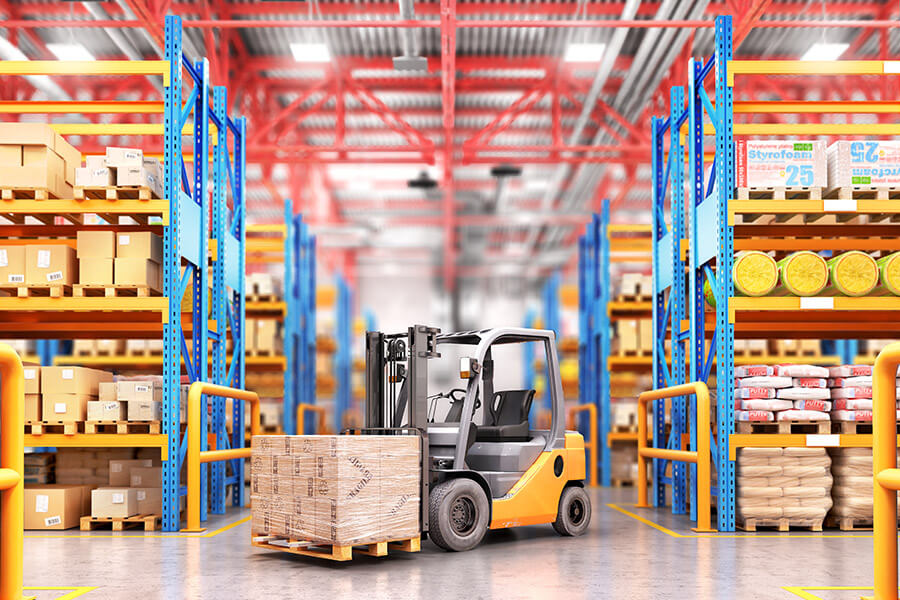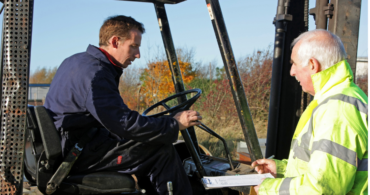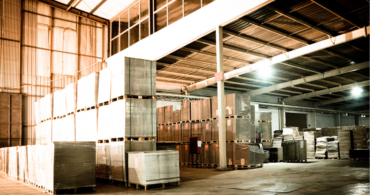There are many different types of warehouse storage systems and several factors to consider when discovering the right warehouse storage equipment for your operation.
There are more warehouses in the U.S. than any other type of commercial building. According to the Commercial Buildings Energy Consumption Survey (CBECS), more than one million warehouses and storage facilities cover 17.4 billion square feet of U.S. soil. Additionally, the size of new warehouses has doubled since 2002, with floor space increasing 143% to 184,693 square feet and clear height increasing by 3.7 feet to 32.3 feet.
The first CBECS report was released in 1979, and this is the first time that warehouses topped the most common building category. Two reasons for this unprecedented demand for warehouse buildings include the rise of e-commerce and consumer expectations for fast delivery. As retailers shorten delivery times, we believe warehouses in dense population centers will continue to experience outsized demand growth.
However, as impressive as 17.4 billion square feet of floor space is, warehousing is about more than the floorplan. While stacking inventory directly on the floor is a time-honored tactic, it’s also highly inefficient and fails to take advantage of available space.
There’s a reason that warehouses have gotten bigger and taller. It’s more effective to utilize the entire space by storing inventory on industrial warehouse storage shelves. However, there are several different options for warehouse storage equipment, and finding the right bulk warehouse storage system depends on several factors, including:
- Maximum storage capacity.
- Type of inventory.
- Variety of inventory.
- The number of pallets per type of inventory.
- Available space.
- Necessary warehouse equipment.
- Budget.
Warehouse shelving racks
High rack storage warehouse systems store inventory while augmenting space, access, and organization. Typically, these structures used to house bulk warehouse storage are securely fixed to the warehouse floor, although sometimes they are affixed to rails that enable the shelves to move.
There are two broad categories of warehouse storage racks: direct access and compact storage. Direct access provides full accessibility to the inventory, which simplifies product management and sorting at the cost of storage space because there are aisles between the racks. Compact storage makes the best use of the available space but sacrifices easy accessibility because there is no space between the racks.
Types of direct access shelving
Single-deep and double-deep pallet racks: Pallet racks are the most common type of warehouses storage system. The benefits of these warehouse shelving racks are that inventory is immediately accessible, and they’re easily adjustable to fit a variety of product sizes and weights. However, the convenience of these industrial warehouse storage shelves comes at a cost to capacity because every rack requires a forklift-accessible aisle.
Single-deep pallet racks accommodate a single pallet per storage slot. Double-deep pallet racks fit two pallets per storage slot. Since inventory is accessible on either side of the rack, storage capacity increases due to the need for fewer aisles.
Single-deep and double-deep pallet racks are best for high-volume warehouses that continually turn over inventory and warehouses that hold a wide variety of stock.
Cantilever racks: If you’ve ever been to the lumber department of a home improvement store, you’ve seen cantilever racks in action. This type of warehouses storage has no shelves, just a series of load-bearing arms. Cantilever racks accommodate long products, such as lumber, pipes, molding, metal sheets, etc.
Cantilever racks are the preferred warehouse storage solutions for businesses that manage automotive, home decor, machinery, and component products.
Mobile racking systems: Like single-deep pallet racks, most mobile racking units only accommodate a single pallet per storage slot. However, these racks sit on bases that roll along rails lining the warehouse floor. The racks slide laterally along these rails, either manually or automatically, to allow access to inventory.
Since mobile racking systems need fewer aisles, they dramatically improve a warehouse’s storage capacity. For example, to save on cooling costs, freezer warehouses and cold-storage facilities often use mobile racking systems to maximize the storage space of a small area.
Types of compact racks
Drive-in pallet racks: These warehouse storage racks don’t have shelves. Instead, the pallets rest on parallel support rails that run the length of the racks. This set-up allows a forklift to drive into the racks, drop-off or remove inventory, and then back out.
Because there is no need for aisles between the racks, drive-in pallet racks utilize most of a warehouse’s space for storage. However, this is a “last-in-first-out” warehouse storage solution because inventory is only accessible from one end. Drive-in pallet racks are suitable for smaller warehouses and ones that house inventory with no “use by” date, such as non-perishable and manufactured materials.
Drive-through pallet racks: These warehouse storage racks have the same set-up as drive-in pallet racks, except that a forklift can drive in one side and exit from the other. Because inventory is accessible from both ends, drive-through pallet racks are a “first-in-first-out” warehouse storage solution.
Warehouses storing perishable items and products that move quickly often use drive-through pallet racks.
Both drive-in and drive-through pallet racks often have “off-set” or “cant” legs where the lowest portion of the front columns recess inward to avoid getting clipped by forklifts.
Push-back racks: The “shelves” of a push-back rack system incline slightly toward the central aisle and are equipped with several rolling carts. A forklift sets a pallet on the rolling cart closest to the central aisle to load inventory. To place a second, the forklift operator lines up the pallet they’re loading with the one on the rack and pushes against it. This process repeats until the lane fills. When a pallet is removed, gravity pulls the one behind it to the front of the row.
So, now that you better understand the different types of warehouse storage systems (or “warehouse stroage,” a common misspelling), you can deck out your building with the warehouse storage solution that best fits your needs. As you stack, store, and ship that inventory, we hope you’ll allow Texas Motive Solutions to help your forklifts operate at peak efficiency. Please call us at (888) 316-2459 or fill out a form to learn more about inventory storage ideas as well as our forklift batteries and accessories.


